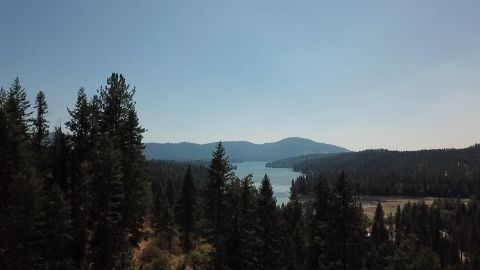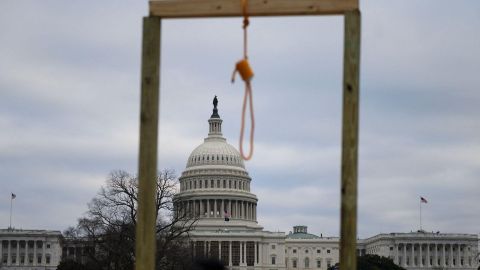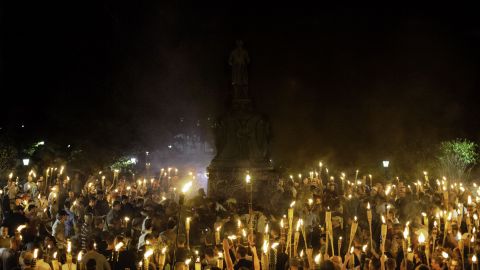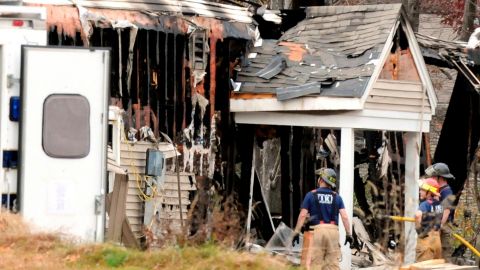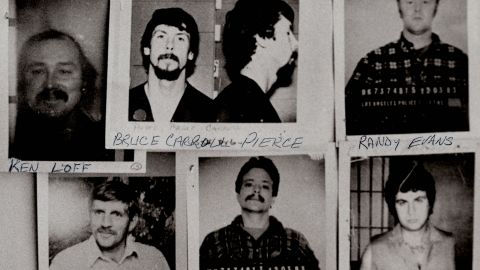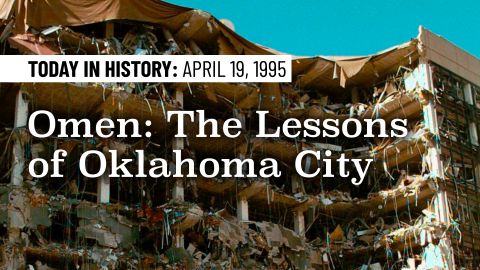After a white supremacist murders seven people in 2012 at a Sikh temple in Wisconsin, congressional hearings are held urging lawmakers to do more about the threat of far-right violence. Instead, officials are slow to recognize violent, homegrown threats and the shooting marks the beginning of a surge in lethal attacks by far-right extremists around the country. Part 4 of our 5-part series Extremism in America.
PRESIDENT JOE BIDEN: Domestic terrorism from white supremacists is the most lethal terrorist threat in the homeland.
MARK POTOK, Senior Fellow, Centre for Analysis of the Radical Right: Why is the radical right growing? Why are these ideas resurging in such a dramatic way?
TEXT ON SCREEN: Demonstrators: You will not replace us!
PETE SIMI, Assoc. Professor, Chapman University; Author, “American Swastika”: We’ve been unwilling to really grapple with our history. We have to understand where this problem has been in the past and what’s kept us from addressing it.
DARYL JOHNSON, Former Senior Analyst, Department of Homeland Security: These groups have incubated unchallenged by the federal government.
MARK POTOK: People who are willing to carry out mass murders are the products of a movement that has been growing for 40 or 50 years. They see themselves as heroes, as defenders of the race.
EXTREMISM IN AMERICA
ESCALATION
TEXT ON SCREEN:
OAK CREEK, WISCONSIN
AUG. 5, 2012
TEXT ON SCREEN:
Operator: Milwaukee County 911.
Operator: Yes, Milwaukee Sheriff.
Caller: Some guy is shooting their gun at some temple or something.
[Gunshots]
TEXT ON SCREEN:
Caller: There is shooting!
Caller: My god, they’re shooting!
Operator: Did anyone get hit?
[Gunshots]
TEXT ON SCREEN:
OPERATOR: Hello?
[Gunshots]
[Dial Tone]
KALEKA: I get a call from my mother. And she’s whispering, “I’m in the closet. We’re safe. Try to call your dad, see if he’s all right.” And then I’m asking her questions. I’m like, is the person still shooting? Can you hear the shots? Can you, what’s going on? And she didn’t, she kind of hangs up and says, “I can’t talk. I don’t want to, I don’t want to give away our hiding spot.”
TEXT ON SCREEN:
POLICE RADIO: He’s a balding male with glasses. May have gone inside with a gun and there were shots fired.
KALEKA: Shortly after that, I get a phone call from my father’s phone, expecting to hear my father’s voice. What I hear is another priest inside, who picked up the phone and say, “Hey, we need help. People are bleeding.”
[Sirens]
[Police Radio Chatter]
[Gunshots]
BRIAN MURPHY, Former Lieutenant, Oak Creek Police Department: I realize I’m going to be the first one there. I enter the lot, and it looked like there was one person down. Checked on him. It was obvious he was dead. This guy was shooting everybody. He comes out of the temple and I could see a gun. He raises it up, I raise mine, and we shoot from about 40 yards away. I missed and his shot hit me right in the face.
Police Officer: We have one officer shot.
MURPHY: And in the end, I take 15 shots.
[Gunshot]
MURPHY: My backup, Sam Lenda, came.
[Shouting]
MURPHY: Sam shot him, he went down and in less than a minute killed himself.
Reporter: Police focused their investigation on this man, Wade Michael Page.
Reporter: A military vet believed to be a white supremacist.
KALEKA: These are all the pictures of everyone who lost their lives.
KALEKA: My father had been shot five times from close range and didn’t make it. Seven people altogether died. This became the deadliest hate crime committed at a place of worship by an affiliated white supremacist in nearly 50 years.
TEXT ON SCREEN: SEPTEMBER 2012
SENATOR. DICK DURBIN, D-ILL.: We held the first hearing on this terrible, violent attack. We’ve got to bring these issues before the public. They have to see them in real terms
DURBIN: Since 9/11, Congress has held dozens of briefings on the threat posed by Al Qaeda and its affiliates. This is the first hearing in many years on the threat of violent domestic extremism.
JOHNSON: I was asked if I would testify before Congress about the domestic extremist threat. My message was this threat is real and it is growing.
JOHNSON: Our failure to act now will assuredly embolden the enemy and bring more attacks.
JOHNSON: The disheartening thing was Dick Durbin, for the first 20 to 30 minutes, was the lone senator attending. No Republicans attended.
DURBIN: Sadly, the shooting in Oak Creek, Wisconsin was not an isolated incident.
DURBIN: I don’t think people took it as seriously as they should have. It’s spreading. And that’s something we didn’t want to hear.
JAVED ALI, Former Senior Director for Counterterrorism, National Security Council: The overwhelming majority of the counterterrorism focus then was still on the international terrorism side, in part because of the scale and scope of the threats. From there, things really started to change in terms of this uptick in lethal attacks in the United States.
TEXT ON SCREEN: 2015
Reporter: The nation is waking up to news of a senseless act of violence in Charleston, South Carolina.
Reporter: One of the deadliest attacks against a Black church in U.S. history.
TEXT ON SCREEN:
Dylann Roof: Somebody had to do something because Black people are killing white people every day on the streets.
Reporter: Dylann Roof charged with nine counts of murder. He is not charged with domestic terrorism.
ALI: Even though there was this horrific attack, no one was calling it domestic terrorism.
Reporter: F.B.I. Director James Comey says that he does not believe that Dylann Roof’s actions were terrorism, because of how it is defined under the law.
ALI: These types of incidents weren’t just run-of-the-mill crimes.
TEXT ON SCREEN: 2018
Reporter: It happened at the Tree of Life Synagogue.
Reporter: Bowers hurled words of hate against Jews as he murdered them.
TEXT ON SCREEN: 2019
Reporter: Here in El Paso tonight, a gunman showing up at a Walmart.
Reporter: Police say a racist manifesto criticized a growing Hispanic population.
Reporter: He thinks white people are being replaced by immigrants.
POTOK: The idea that whites are under threat is probably the single most important thing driving the really dramatic expansion of the radical right. Among some, it’s the Jews who are trying to replace us white people. Uh, other places, it is Black people who are trying to replace us white people.
POTOK: Wade Page had a tattoo of the 14 Words. “We must ensure an existence for white people and a future for white children”, a slogan that was coined by a principal member of The Order, part of the hit team that murdered the Jewish talk show host Alan Berg in 1984. And this has become an incredibly central slogan, uh, for the radical right in the United States. Wade Michael Page, Dylann Roof are the products of a movement that has been growing for 40 or 50 years.
ALI: Potentially we could have gotten ahead of some of these threats. Or at least called them something else. That would have given a different context to the threat and perhaps led to different decisions about what to do. But we didn’t and we’re left with the situation we’re in now.
[Music]
MURPHY: There’s still lingering effects on, on not only me, my family. Like, this can happen anywhere. This can happen to anyone. This can happen at any time.
KALEKA: There’s not a day that goes by that I don’t think about what happened that day, not a single day.
KALEKA: So this is the first shot.
KALEKA: If the shooter had been a Muslim, if the shooter had been brown and if the communities inside were white, if they were Christian, if they were part of the mainstream of what we deem as valuable, would it have been different? And I think that ten years later I still struggle with, is our pain enough? Since the shooting on August 5th, we’ve worked in the extremism prevention field for now almost ten years. We know that the biggest threats is the homegrown terrorist, and what is happening right now is that we do not have the infrastructure laid to actually address that. There’s lots of Wade Michael Pages out there, so we better start understanding the dynamic.

